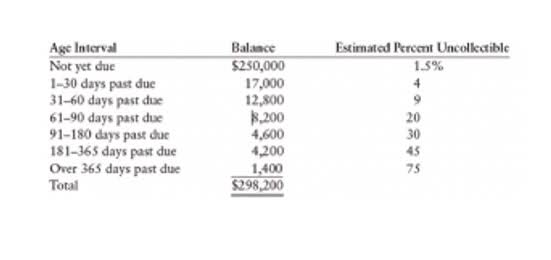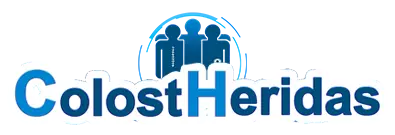
The term «absorption costing» means that the company’s products absorb all the company’s costs. Looking at the above mentioned example, Absorption Costing could be required to determine the overhead costs of the enterprise. The more items one plant can produce, the lower the costs will be of these items, especially the overhead costs. If the factory starts producing other items or products, it is possible to spread and reduce the overhead costs even further. In periods where production declines, the opposite effect happens – fixed costs are released from inventory, increasing cost of goods sold and lowering net income. As you can see, the AC method assigns the cost of the workers’ wages and the utility expenses to the merchandise being produced.
Step 3: uner / over absorbed fixed production overhead costs
Also, it includes direct material costs, direct labor expenses, and variable production overheads. Moreover, there is no concept of overhead overabsorption or under-absorption. Variable costs can be more valuable for short-term decision-making, giving a guide to operating profit if there’s a bump-up in production to meet holiday demand, for example. The absorbed-cost method takes into account and combines—in other words, absorbs—all the manufacturing costs and expenses per unit of a produced item, ones incurred both directly and indirectly. Some accounting systems limit the absorbed cost strictly to fixed expenses, but others include costs that can fluctuate as well. Absorption costing is an easy and simple way of dealing with fixed overhead production costs.
Determining Unit Product Cost: Absorption Costing Approach

Under variable costing, the fixed overhead is not considered a product cost and would not be assigned to ending inventory. The fixed overhead would have been expensed on the income statement as a period cost. If the 8,000 units are sold for $33 each, the difference between absorption costing and variable costing is a timing difference. Under absorption costing, the 2,000 units in ending inventory include the $1.20 per unit share, or $2,400 of fixed cost. That cost will be expensed when the inventory is sold and accounts for the difference in net income under absorption and variable costing, as shown in Figure 6.14.
Ineffective in the formulation of a flexible budget:
(g) This cost-finding technique results in the under-or over-absorption of industrial overhead. Overhead Absorption is achieved by means of a predetermined overhead abortion rate. Deskera Books will assist in inventory management, automate inventory tracking and their insights. It also have backorder management which will ensure that you never fall short of any inventory.
Indirect costs are those costs that cannot be directly traced to a specific product or service. These costs are also known as overhead expenses and include things like utilities, rent, and insurance. Indirect costs are typically allocated to products or services based on some measure of activity, such as the number of units produced or the number of https://www.bookstime.com/articles/what-is-a-bookkeeper direct labor hours required to produce the product. Absorption vs. variable costing will only be a factor for companies that expense costs of goods sold (COGS) on their income statement. Although any company can use both methods for different reasons, public companies are required to use absorption costing due to their GAAP accounting obligations.
Activity-Based Costing (ABC): Method and Advantages Defined with Example – Investopedia
Activity-Based Costing (ABC): Method and Advantages Defined with Example.
Posted: Sat, 25 Mar 2017 23:37:57 GMT [source]
Direct and Indirect Costs
Moreover, variable costing results in a single lump-sum spending line item for fixed overhead expenditures for calculating net income on the income statement. In the event of fluctuating production levels, absorption costing can lead to more reported income over the course of time. This is possible because the fixed overheads are spread out through units produced.
Absorption Costing vs. Variable Costing: An Accounting Perspective
Because absorption costing includes fixed overhead costs in the cost of its products, it is unfavorable compared with variable costing when management is making internal incremental pricing decisions. This is because variable costing will only include the extra costs of producing the next incremental unit of a product. Absorption costing and variable costing are two different methods of costing that are used to calculate the cost of a product or service. While both methods are used to calculate the cost of a product, they differ in the types of costs that are included and the purposes for which they are used. The differences between absorption costing and variable costing lie in how fixed overhead costs are treated. Advocates of absorption costing argue that fixed manufacturing overhead costs are essential to the production process and are an actual cost of the product.
- If the units are not sold, the costs will continue to be included in the costs of producing the units until they are sold.
- Expenses directly linked to a particular good or service are referred to as direct costs.
- Variable costing only includes the product costs that vary with output, which typically include direct material, direct labor, and variable manufacturing overhead.
- Absorbed cost allocations for one product produced may be greater or lesser than another.
- Fixed manufacturing overhead is still expensed on the income statement, but it is treated as a period cost charged against revenue for each period.
- Although absorption costing is required for financial reporting under Generally Accepted Accounting Principles (GAAP), some businesses that do not have to follow GAAP may elect to use variable costing instead.
They further argue that costs should be categorized by function rather than by behavior, and these costs must be included as a product cost regardless of whether the cost is fixed or variable. Under the absorption costing method, all costs of production, whether fixed or variable, are considered product costs. This means that absorption costing allocates a portion of fixed manufacturing overhead to each product. Because absorption absorption costing costing defers costs, the ending inventory figure differs from that calculated using the variable costing method. As shown in Figure 6.13, the inventory figure under absorption costing considers both variable and fixed manufacturing costs, whereas under variable costing, it only includes the variable manufacturing costs. Under absorption costing, the inventory carries a portion of fixed overhead costs in its valuation.

Due to fixed costs, an increase in output volume typically leads to lower unit costs, and a decrease in output typically results in a higher cost per unit. In the long run, pricing established only in terms of variable costs (as encouraged by variable costing) may leave a contribution margin insufficient to cover fixed expenses. The only distinction between ABS costing and variable costing is how fixed production overhead is handled. Absorption costing is typically used in situations where a company wants to understand the full cost of producing a product or providing a service.
- Moreover, there is no concept of overhead overabsorption or under-absorption.
- A drop in output, on the other hand, usually means a greater cost per unit.
- It provides a straightforward and rigorous costing tool for active enterprises.
- The term «absorption costing» means that the company’s products absorb all the company’s costs.
- Both fixed and variable operating expenses incurred during the period are recorded.

